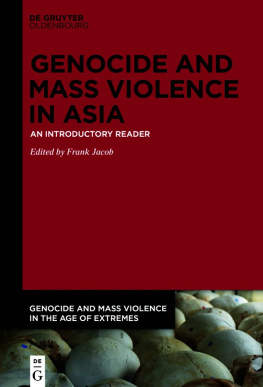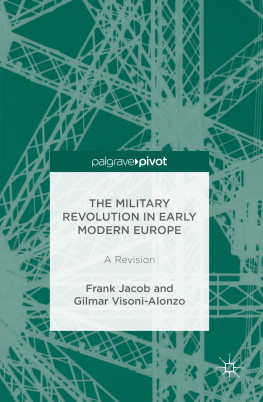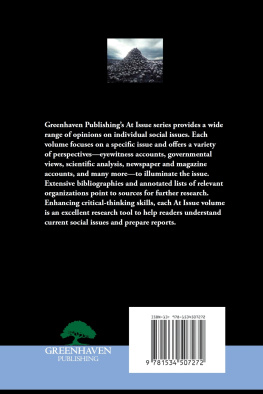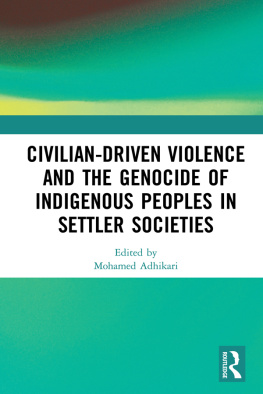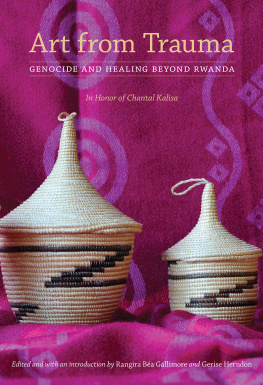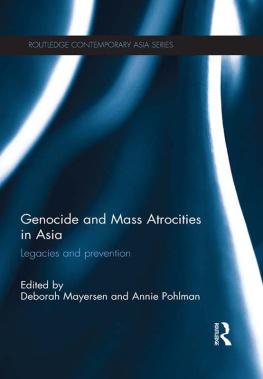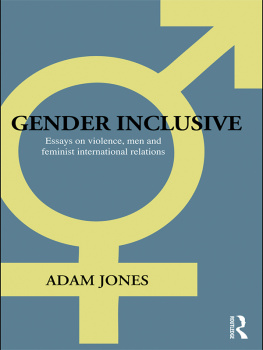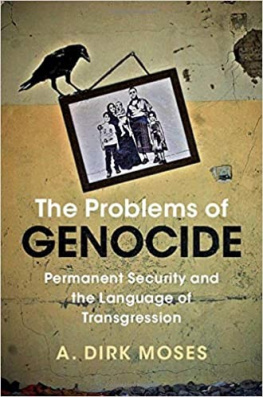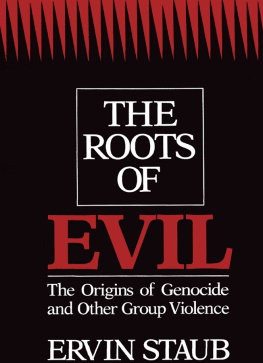Genocide and Mass Violence in Asia: An Introduction
Frank Jacob
Nord Universitet , Faculty of Social Science , Universitetsallen 11 , 8049 Bod , Norway
A genocide begins with the killing of one [woman or] man
not for what [she or] he has done, but because of who [she or] he is.
The late Nobel Peace Prize laureate and former General Secretary of the UN Kofi Annan (19382018) emphasized in his Nobel Lecture in 2001 that the crime of all crimes often begins with a single murder. This violent act does not only physically destroy a human being, but, as French philosopher Michel Foucault (19261984) highlighted, power relations are established and new mechanisms of power are eventually installed or fortified within a society. The 20th century in particular witnessed countless attempts to restructure such power relations and, as a whole, the years between the First World War and the end of the Cold War, i.e. the period Eric Hobsbawm (19172012) called the Age of Extremes, were perhaps, as Kofi Annan correctly further remarked, the deadliest in human history, devastated by innumerable conflicts, untold suffering, and unimaginable crimes.
The century was determined by imperial wars, two World Wars, the Cold War, and new wars at its end. These were often accompanied by forms of mass violence, i.e. mass killings or genocides. German historian Christian Gerlach consequently speaks of extremely violent societies that determined the course of this Age of Extremes. Gerlach describes these extremely violent societies as
formations where various population groups become victims of massive physical violence, in which, acting together with organs of the state, diverse social groups participate for a multitude of reasons. Simply put, the occurrence and the thrust of mass violence depends on broad and diverse support, but this is based on a variety of motives and interests that cause violence to spread in different directions and varying intensities and forms.
Individuals and groups were challenged by political developments, and identity conflicts between, but often also within, societies were the consequences. In Asia, nationalism and anti-colonialism stimulated change, but also opened new conflicts, especially between those who had different concepts of identity that were based on religion, political ideas, or social classes. The Cold War in particular influenced genocidal acts related to the proxy wars of the superpowers in Asia, which is why Immanuel Wallersteins evaluation of this conflict is correct: the Cold War may have been cold in Europe, but in Asia, it was definitely a hot war, causing countless casualties and destruction. Regardless of the numerous attempts to contain such violent eruptions and to prevent further genocides, the last two decades of the 20th century made it obvious that the crime of crimes did not only determine the last century, but is still a dangerous factor and, as Italian sociologist Franco Ferrarotti emphasizes, [i]t is significant that genocide[s] occurred after the establishment of human rights organizations [and] after the invention of modern, instantaneous communication technologies. The term Age of Genocide, as used by the Canadian political scientist Peter J. Stoett for the last century, obviously stretches into the 21st century as well, especially when considering current cases, like that of the Rohingyas in Myanmar.
Regardless of such contemporary cases of mass violence, the number of genocides since the end of the Second World War is rather low, especially in Asia. This, however, is related to problems with the definition, introduced by Polish lawyer and anti-genocide activist Raphael Lemkin (19001959) in the 1940s. When Lemkin defined genocide in 1944, he, of course, coined a term born from the Holocaust, which was almost naturally often read in reference to the almost total destruction of the European Jews by the Nazis. Due to the timely context of Lemkins theoretical concept, as legal scholar Tatiana E. Sainati states, the Holocaust remains the lens through which other cases of possible genocide are interpreted, [and] which has significantly limited the number of incidents that have ultimately been labeled as genocide. This limitation is, however, in the first place related to Lemkins original concept as such:
Genocide is the crime of destroying national, racial or religious groups. The problem now arises as to whether it is a crime of only national importance, or a crime in which international society as such should be vitally interested. Many reasons speak for the second alternative. It would be impractical to treat genocide as a national crime, since by its very nature it is committed by the state or by powerful groups which have the backing of the state. A state would never prosecute a crime instigated or backed by itself.
Lemkin consequently argued that it was important to sign the UN Convention on the Prevention and Punishment of the Crime of Genocide of 1948 to prevent further genocides in the future.
Nevertheless, his concept has its limitations, namely related to methods of killing and the reasons for it. Although Lemkin wanted to continue his research on genocide and the available project description for a planned global history of genocides implies that the Polish lawyer would have included non-Western and especially Asian case studies as well, it is a fact that the concept as such remained existent in its limited and very Eurocentric form. Today, two conceptions i.e. a minimalist one, arguing for the pursuance of Lemkins original definition of 1944 and the UN Convention of 1948, and a maximalist one arguing for the inclusion of death from state negligence, imperial expansion, economic exploitation, and cultural destruction are used to either limit or to broaden the number of genocides.
In particular, mass violence against a group that shares a specific political or gender identity is not covered by the UN Convention, and therefore would rather deserve to be defined as or called politicide or gendercide. Especially in the Asian context, the use of the UN Conventions definition limits the perspective, as mass violence due to political reasons is almost totally excluded, and the case of Cambodia already illustrates the critical shortfall of the Genocide Convention. The limitations of the 1948 Convention must be understood as a necessity of the time, however, because, as Sainati correctly highlights, the explicit omission of political groups from the definition of genocide that was enshrined in the 1948 Convention exemplifies the practical compromises that were necessary to ensure widespread support in the harsh world of Cold War politics. It is, however, no surprise, that this limitation has been criticized in the decades since the late 1940s, and attempts to change the terminology have been made by many lawyers, historians, and activists alike.


